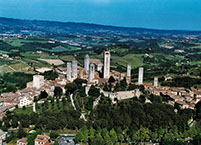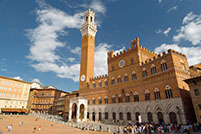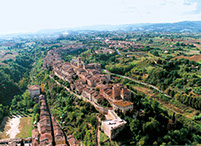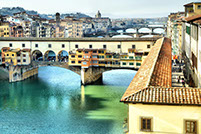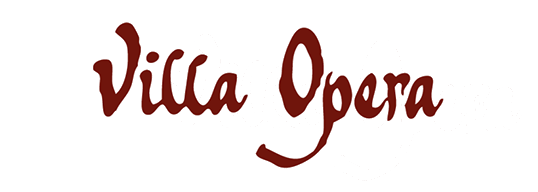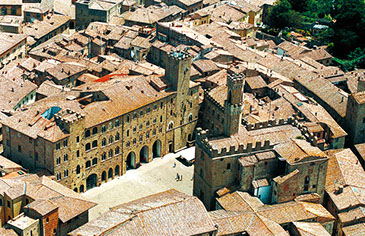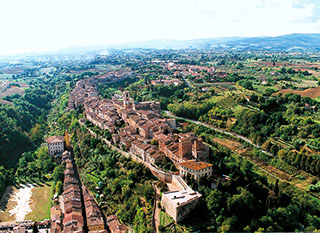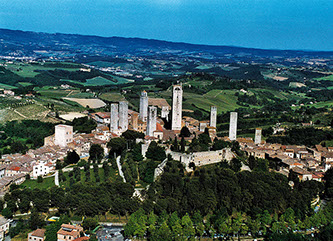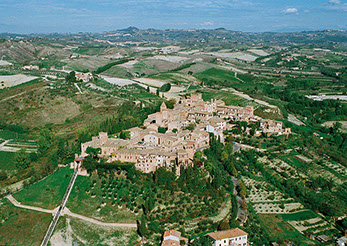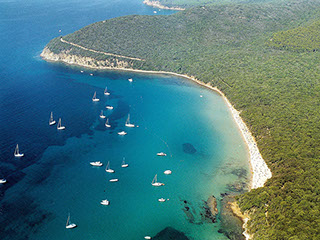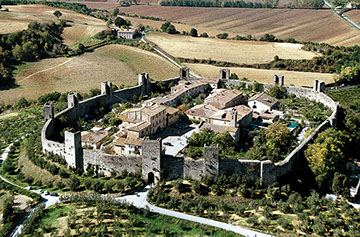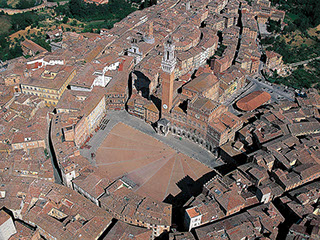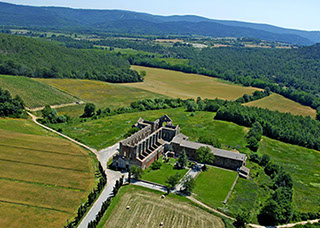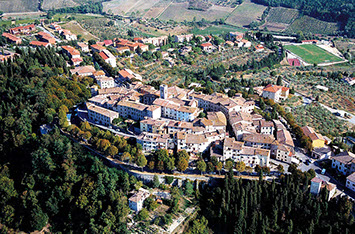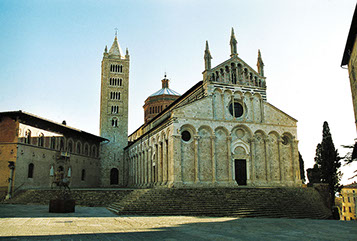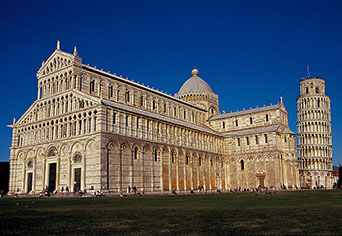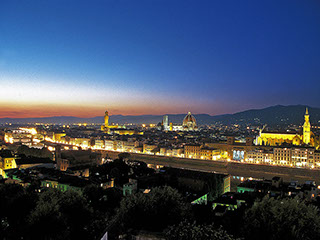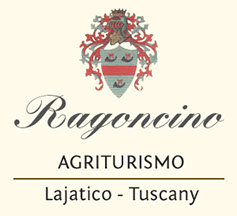AGRITURISMO Villa Opera
WHAT TO DO
VOLTERRA
Volterra’s history began 3000 years ago when the important Etruscan center of Velhatri emerged from among the Villanova civilization. Artifacts from that period may be seen in the Museo Etrusco Guarnacci. The Porta all’Arco and the gigantic Etruscan city walls go back to that period. Volterra was the last town to surrender to the Romans. The Teatro Romano di Vallebona reminds us today of their long presence.
In the fifth century CE, Volterra became a bishopric. During the Goth and Lombard periods of occupation, Volterra survived with difficulty as the secular history of the Volterran bishops unfolded. As elsewhere, Volterra then became an independent city commune, whose economic base rested on earnings from mines (salt etc.). The Piazza dei Priori, the Duomo, and the new city walls recall this period. During the XVth century the town came under the influence of Florence. Lorenzo il Magnifico ordered the Mastio built. A long period of slow decline ensued. Great works of art were gathered meanwhile: one can see them at the Pinacoteca.
Manufacture of alabaster objects and a modernizing agriculture reversed the trend, starting with the XVIIIth century. We can appreciate the effects of such economic development e.g. in the Palazzo Incontri-Viti. Today, the city is based on a differentiated and sustainable economy. For further features: http://bit.ly/1SIPIRo
THE COUNTRYSIDE
Nestling between the Maremma and the Val di Chiana, the Volterran countryside features several ranges of hills surrounding the Val di Cecina. Many of the scattered villages have hardly been touched by time. Castles, oratories, and hermitages may be found absconded here and there.
The Tuscan macchia is widespread, distinctive, and unspoiled. Among the best places are the Riserve Naturali of Berignone and Monterufoli. The sea is only 40 minutes away by car: one drives to the nearby locality of Cecina.
The Via Francigena weaves its way from north to south across the Volterran landscape, touching villages and hamlets. It roughly follows the path which pilgrims took in olden times to go from Canterbury to Rome.
TheVia del Sale or "Salaiola"(which subsequently took on the name Volterrana) was a path merchants took as they moved salt from west to east to the markets of Volterra, Siena, Colle Val d'Elsa, Chiusi, and other Etruscan towns. La Via del Sale linked Volterra and San Gimignano well before these two cities split in enmity.
SPORT ACTIVITIES
Volterra has much developed ecotourism: there is only the embarrassment of riches.
The opportunities for trekking and Nordic walking abound; mountain-bikers can choose among numerous circuits; one can take long and leisurely rides across the glens and woods.
Upon request, we shall supply addresses of riding schools in the surrounding areas.
DISTANCES
All of Tuscany is close by. Here the distances from Volterra to the major towns in Tuscany:
• Firenze: 75 km (70 min)
• Siena 55 km (60 min)
• Pistoia 110 km (90 min)
• Lucca 95 km (90 min)
• Pisa 67 km (75 min)
• Livorno 75 km (75 min)
There are also surprising places nearby:
• San Galgano 55 km 60 min)
• Montalcino 92 km (95 min)
• Massa Marittima 55 km (75 min)
• Pievescola 35 km (45 min)
• Mensano 32 km (45 min)




